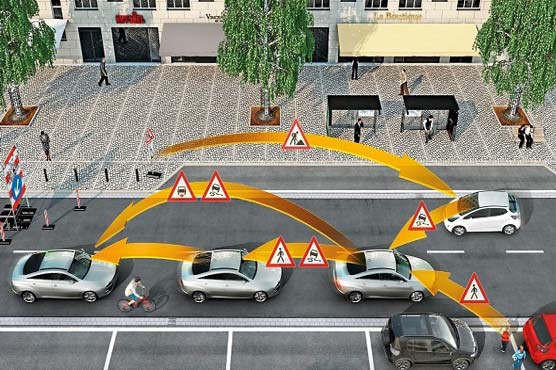Automakers voice concerns about WiFi-based tech for vehicle-to-everything communication

Automakers voice concerns about WiFi-based tech for vehicle-to-everything communication
(Web Desk) - The Federal Communication Commission’s plan to upend 21 years of vehicle to everything (V2X) communications research is now also being upended. FCC chairman, Ajit Pai, announced recently that he would be stepping down on January 20.
The FCC launched a fight with the department of transportation this year when it announced that it would be carving out a portion of the 5.9Ghz radio wave band. It’s fairly complicated, but what’s important to understand is that the plan, which was approved by the FCC on November 18, before Pai’s announcement, would introduce a second way for cars to communicate with each other and nearby infrastructure.
According to Reuters, the decision was labeled as “particularly dangerous” by the Transportation Department. Why? Because the new way for cars to communicate with one another, known as C-V2X, would utilize WiFi.
That, according to the Transportation Department, has not been tested as thoroughly as the traditional method of communications, known as V2X. According to US Transportation Secretary Elaine Chao, it could result in “thousands more deaths annually on road and millions more injuries.”
The fear is that C-V2X could be susceptible to interference with from other WiFi devices nearby. Although some automakers like Audi have started testing C-V2X, many more are upset about the change.
GM, for instance, told Reuters that “the FCC continues to move towards jeopardizing roadway safety” when it approved carving up the 5.9Ghz band.
The reason automakers are so upset about the change isn’t simply the lack of testing that C-V2X has undergone; it’s also how much testing has gone into V2X.
The 5.9 Ghz band wave was set aside for automotive use in 1999. Although the industry has been slow to make use of it, automakers have been working hard on getting the V2X ready since the early 2010s. Widely seen as a crucial step in getting autonomous vehicles ready for the road, hurdles at this point are not welcome.
And the frustration isn’t just about how much time (and resources) have already been invested. For any vehicle to infrastructure communications to be effective, be they V2X or C-V2X, there has to be adopted from everybody. Introducing a new split may just gum up the works.
“The only way to get it to work is if everyone has it,” Debby Bezzina, managing director of the Center for Connected Driving, said, according to Car and Driver. “So, if you take a heavily trafficked road and put only one car with V2V capability on it, no one benefits. It’s a talking car with no one to talk to.”
The move to adopt C-V2X, among other things, was cited by Toyota when it recently announced that it was slowed the rollout of any vehicle-to-everything technology. And now, as the uncertainty felt like it couldn’t get worse, Ajit Pai’s imminent departure leaves things even more uncertain.
Pai’s departure mirrors similar uncertainty caused by a changing presidency. When Donald Trump entered office in 2017, the National Highway Traffic Safety Administration and the Transportation Department’s plan to make vehicle-to-vehicle communications technology mandatory on all new cars was put on ice.

